UTTRI News, Thursday, March 16, 2017
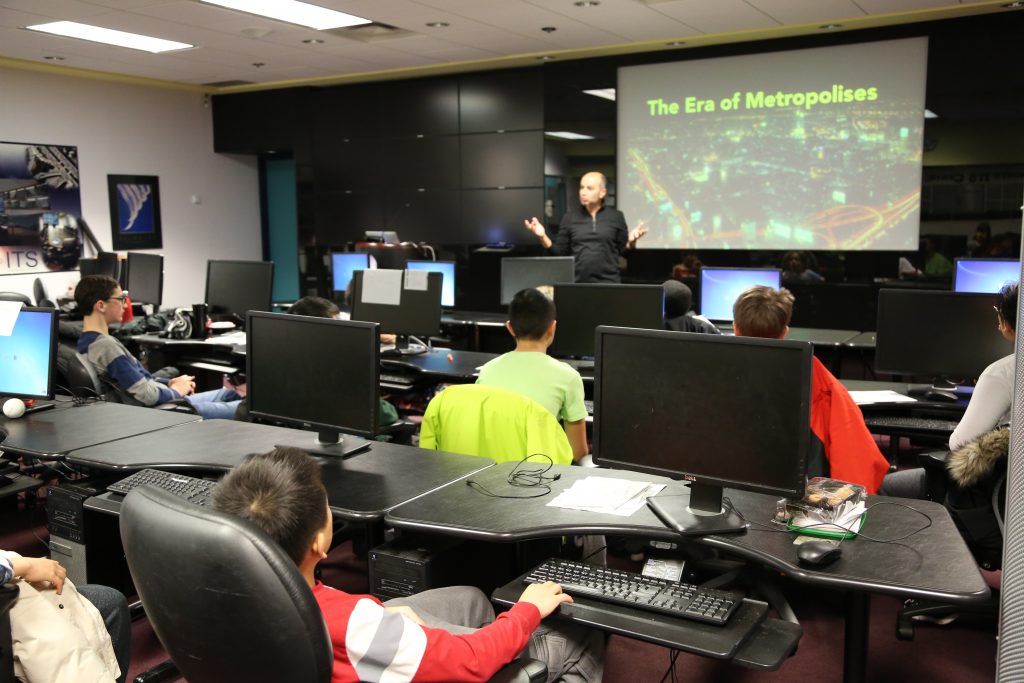
As a result of partnership through iCity: Urban Informatics for Sustainable Metropolitan Growth research project, a group of 25 young visitors from Maximum City attended a special presentation at UTTRI’s Intelligent Transportation Systems (ITS) Centre during March break.
Professor Baher Abdulhai, Director of the ITS Centre, talked to the group about the nature of metropolises, traffic congestion and intelligent systems.
He talked first about a few ways to reduce traffic congestion:
- Increase infrastructure. Build more roads; build more transit. Very expensive.
- Encourage other modes of travel. Use road tolls; encourage carpooling and use of public transit and active transportation.
- Be intelligent about it. Use smart technology to reduce waiting times at intersections. A relatively inexpensive way to avoid increases in congestion while the number of vehicles increases.
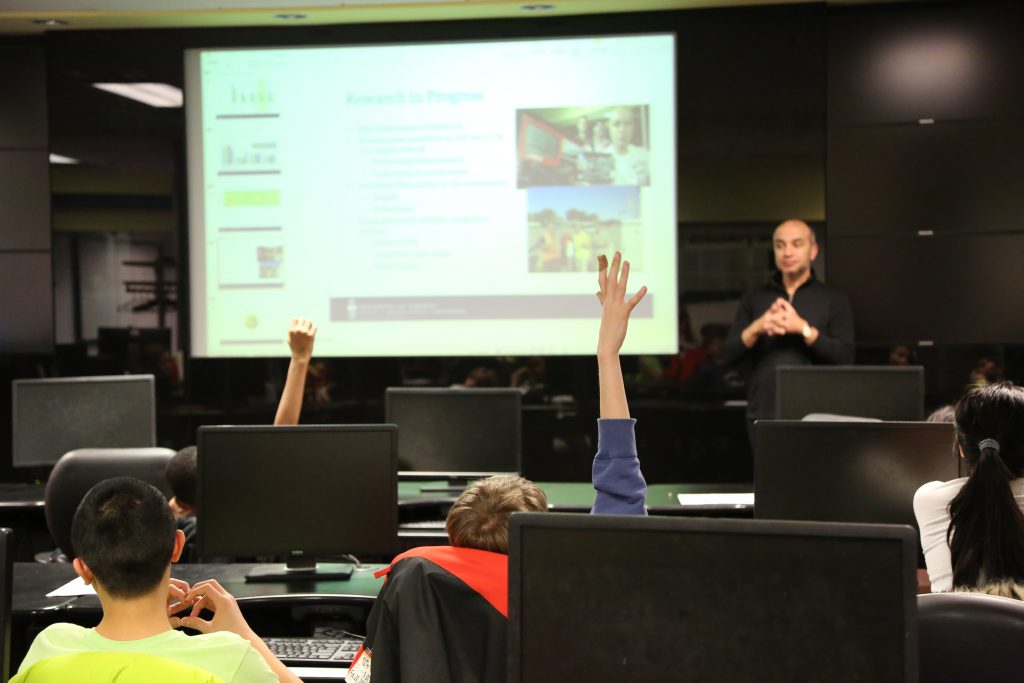
What is “smart”?
“Everything for you is ‘smart’,” Professor Abdulhai said to his young audience. “I never imagined when I was your age that one day I would wear shoes that can tell me how many calories I’m burning, or whether I’m walking fast enough, and that talk to a satellite while I’m actually wearing them.”
“What makes something smart?” asked Professor Abdulhai. After some discussion, it was agreed that ‘smart’ is capable of learning and of answering a question, and able to function without a human directing it, e.g. an autonomous vehicle. A ‘smart’ device or technology is able to learn about the user and the environment.
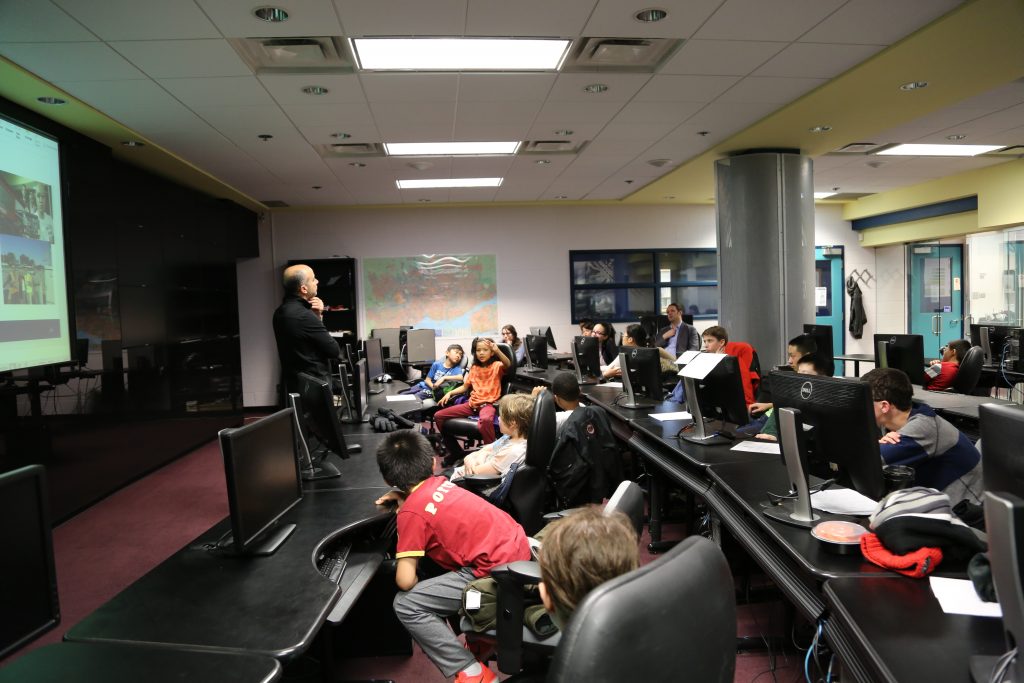
Can a traffic light learn?
“Can we make traffic lights smart? Can a traffic light learn?”
This YouTube video illustrates the concept of ‘smart’. The crawling robot is learning how to walk.
To learn how to walk, the robot has to adapt based on the results of its previous action. It discovers new ways and changes – this is how artificial intelligence (AI) works.
“In my research,” explained Professor Abdulhai, “a smart piece of software was connected to all the traffic lights in a model, and told the system: ‘You learn – and tell us how to control the traffic lights in a better way to reduce congestion.’ So the software started learning and learning, and came back to us saying ‘I discovered a better way of doing things.’”
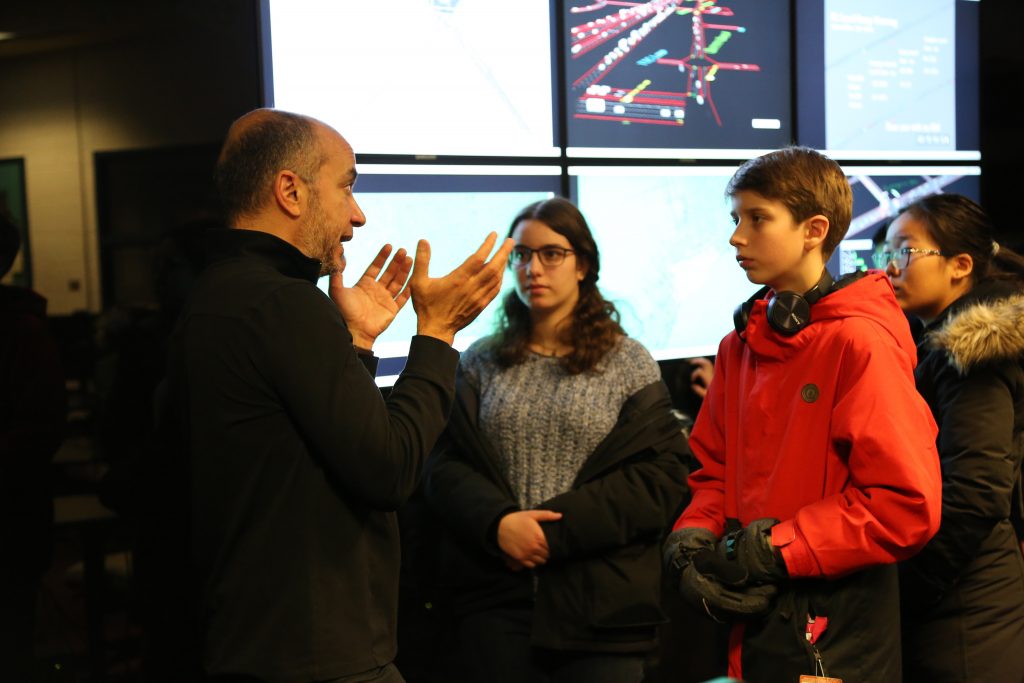
Team effort best
Although not a player himself, the professor compared the smart traffic lights to a hockey team. “Playing well individually is good; playing well together is better. Good teammates know each other’s thinking. They work individually to help themselves, but they are also trying to help the team.”
Professor Abdulhai shared his research results. “We discovered that the lights worked better as a group – like any sports team. Each traffic light needed to deal with its intersection individually; but more importantly, a series of traffic lights needed to work together as a team to help the system work even better.”
The University of Toronto Transportation Research Institute would like to thank Professor Baher Abdulhai for conducting this special March break session with Maximum City.
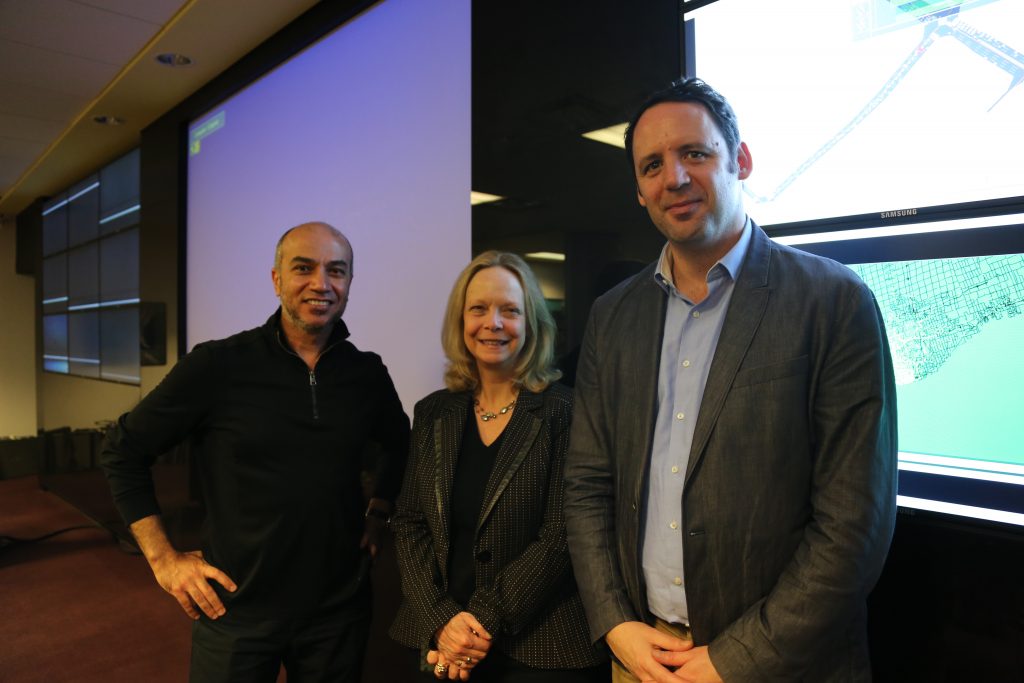
iCity: Urban Informatics for Sustainable Metropolitan Growth and its work is funded by the Ontario Research Fund-Research Excellence (ORF-RE). iCity is a “virtual lab” for urban design in which “big” new datasets are combined with powerful simulation and visualization capabilities to address first-order problems in improving urban transportation system performance and designing efficient, sustainable, high quality of life cities. The iCity research platform is a co-creation of a team of multidisciplinary researchers, including transportation engineers, urban planners, computer scientists and experts in digital media.
Maximum City is a youth outreach partner of UTTRI through the iCity research project. We work together to develop and deliver curriculum to youth. Our program connected with 500 students in its first year. Maximum City also works with schools, governments, and communities and trains teachers to deliver its hands-on city-building and environmental challenges to their students.
